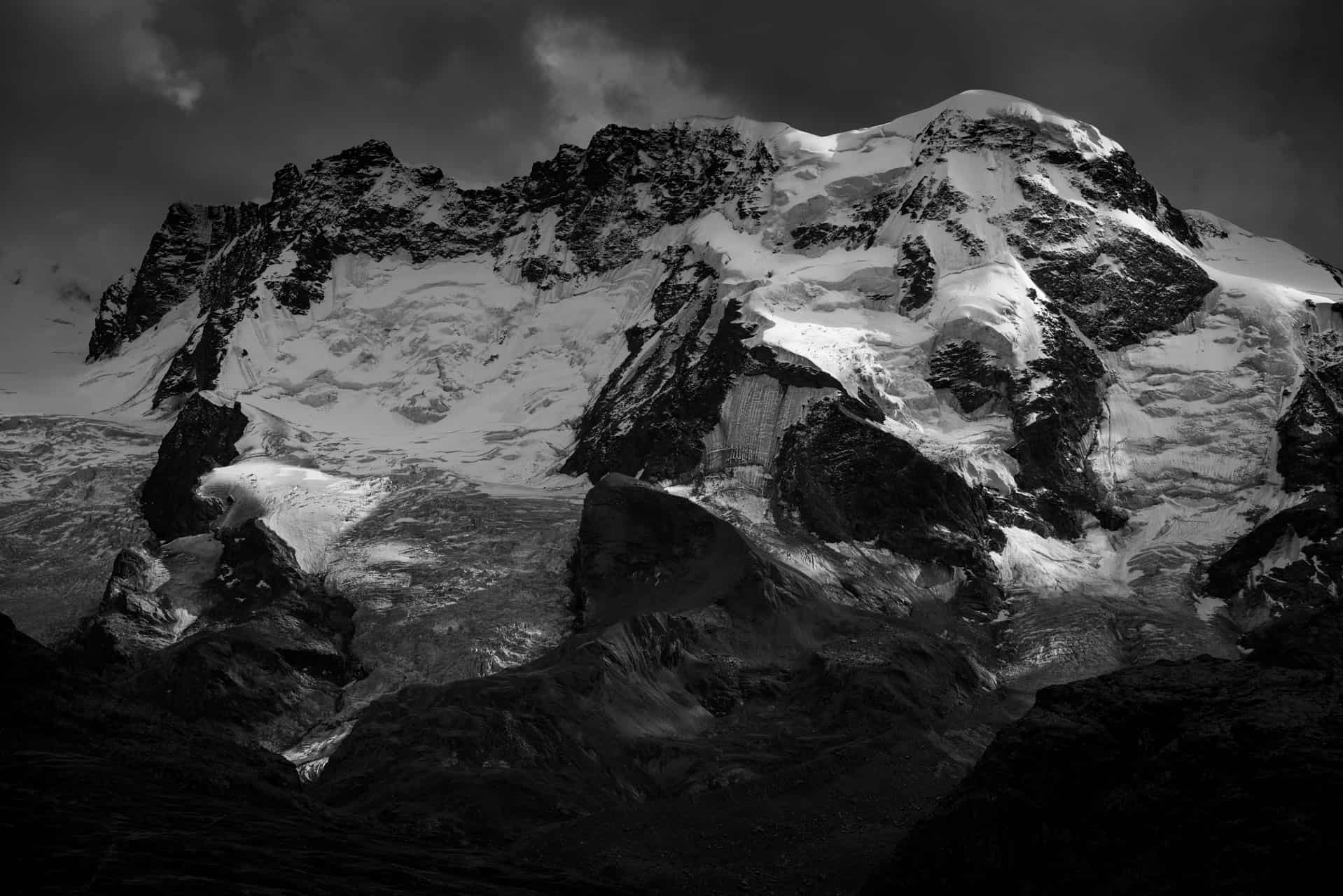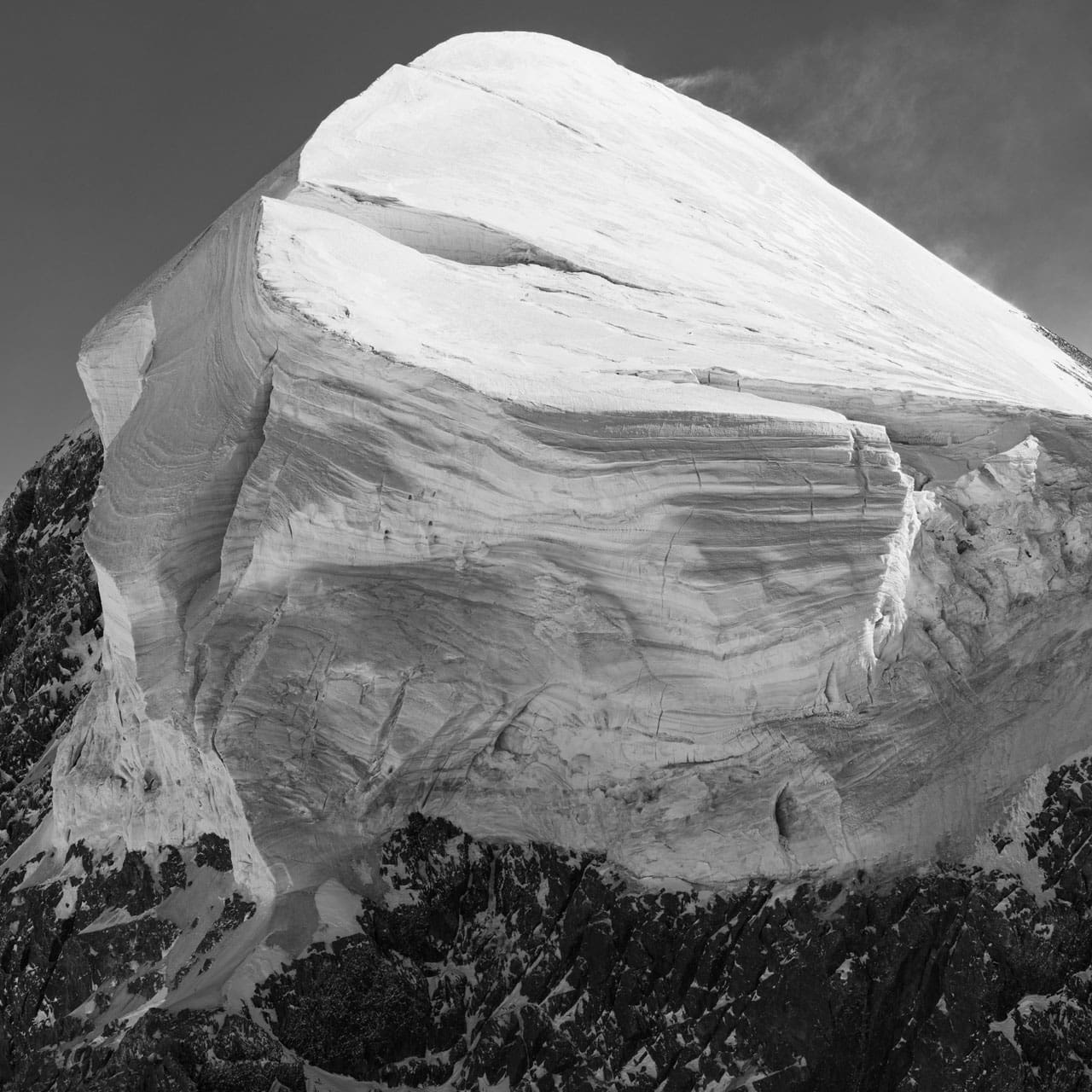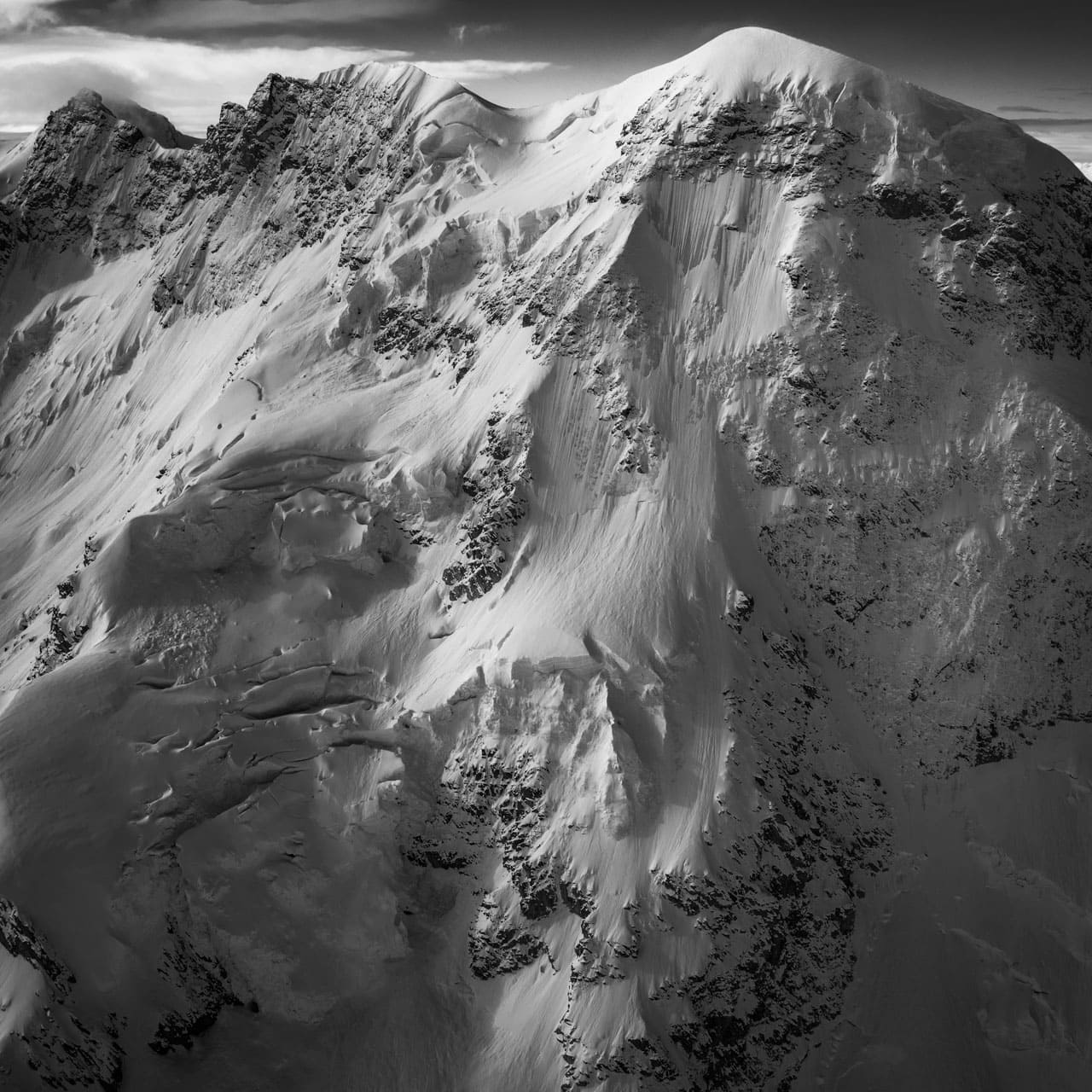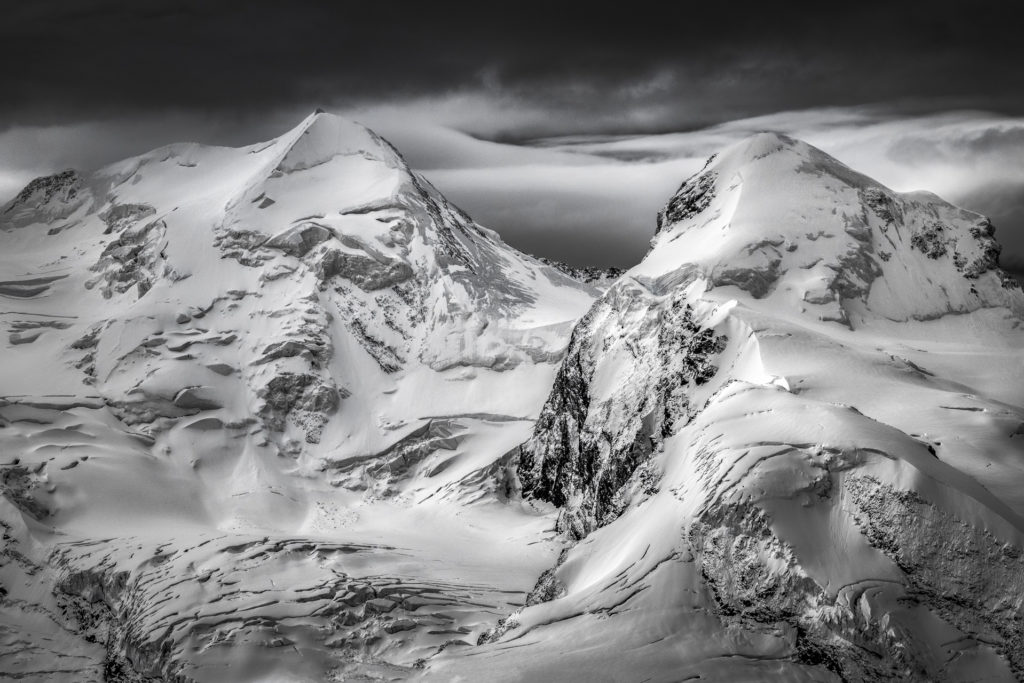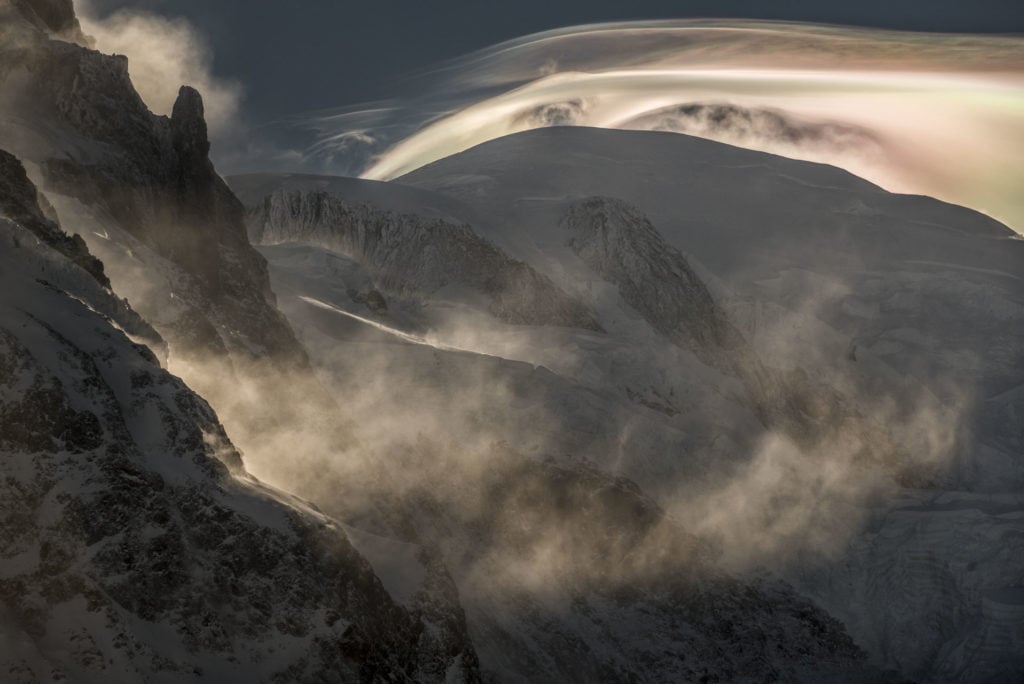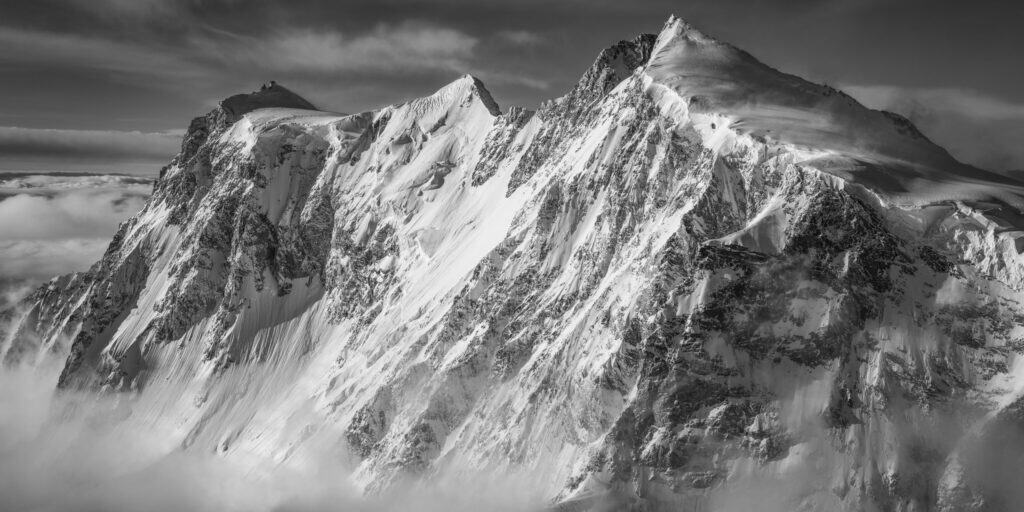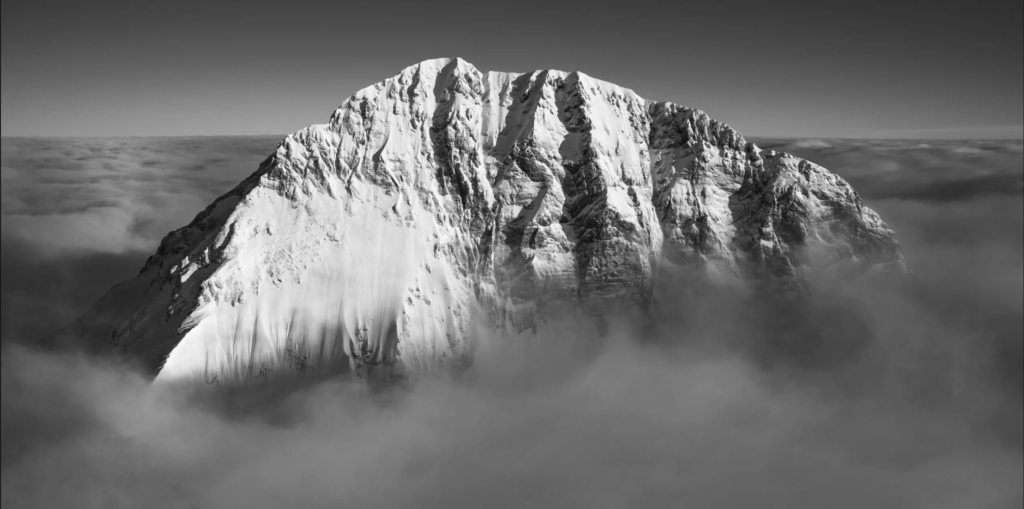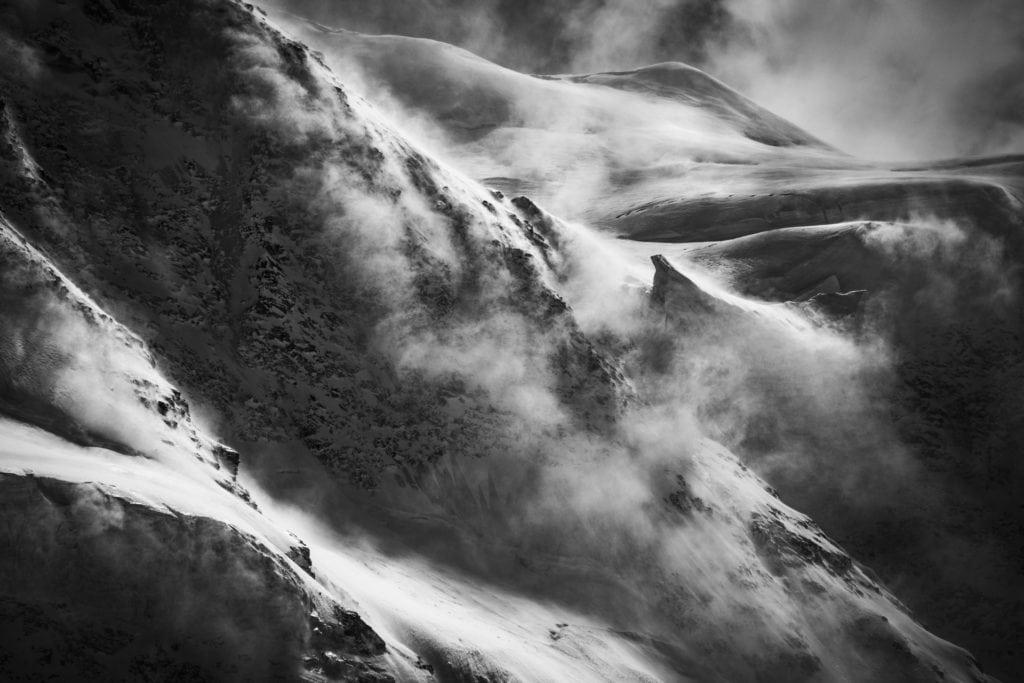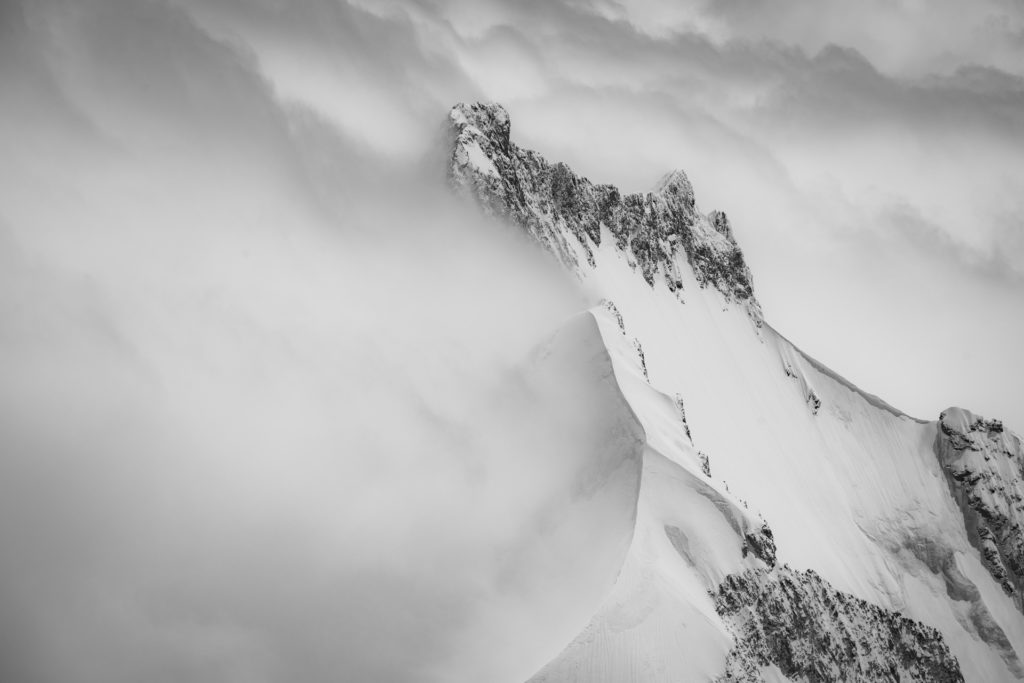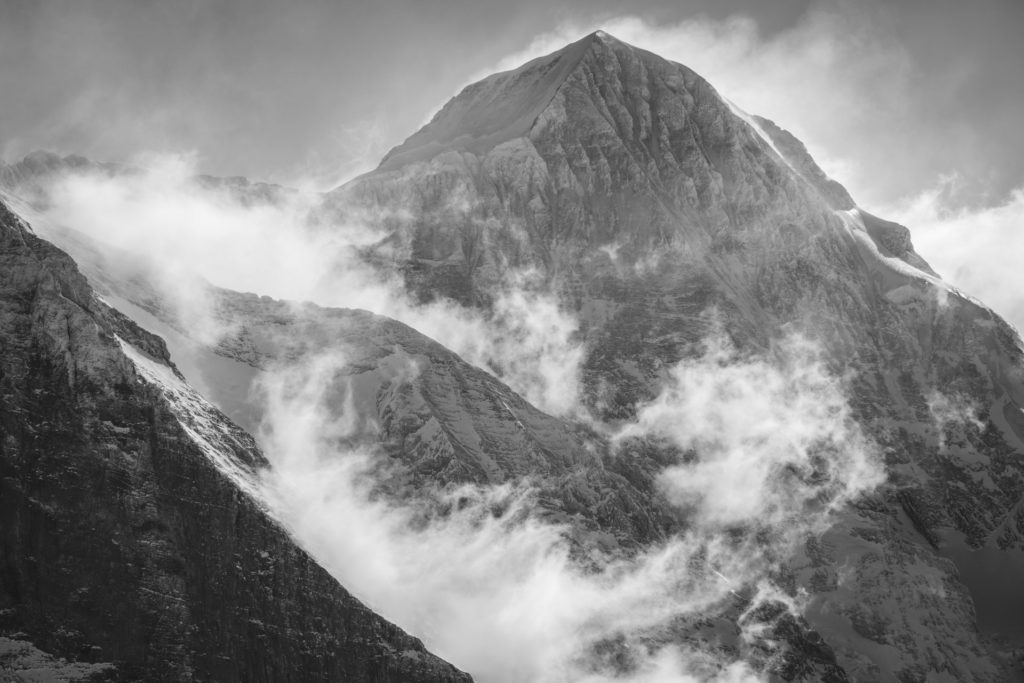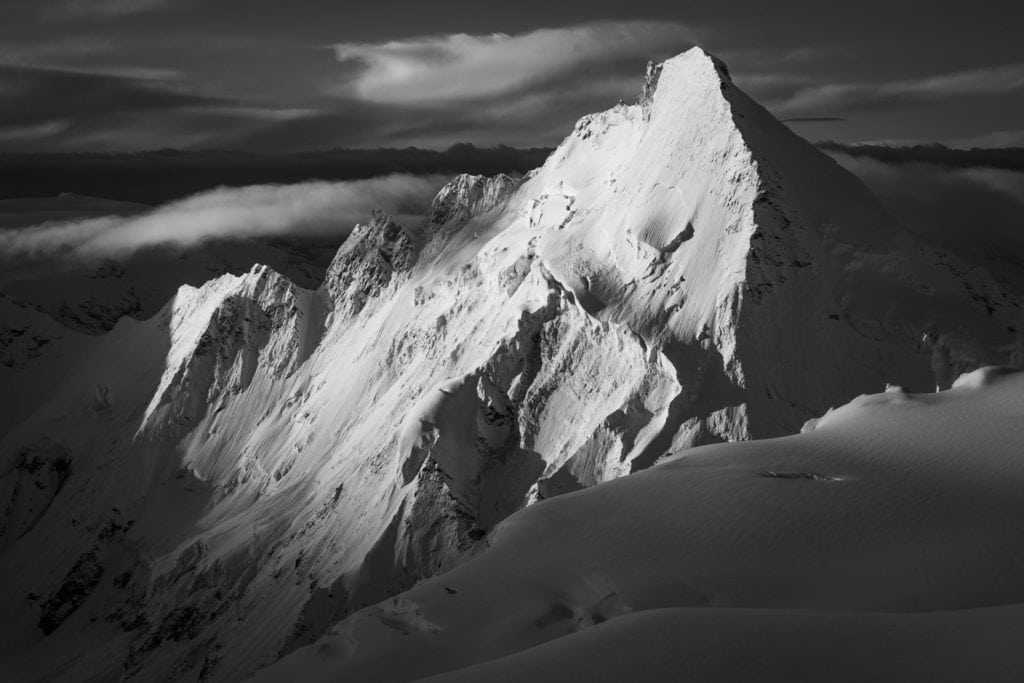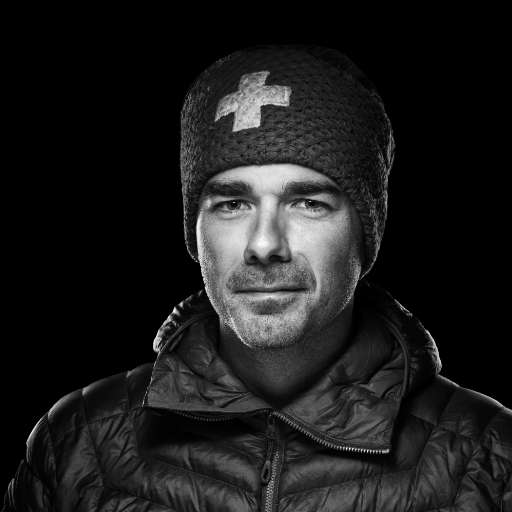From the heights of Gornergrat, the mountain reveals itself. Like a titan, it deploys its dazzling armour to challenge the skies of the Zermatt valley. But do we really know the story of this giant? Today, I'd like to paint a portrait of Breithorn, the wall of ice at summit the Alps.
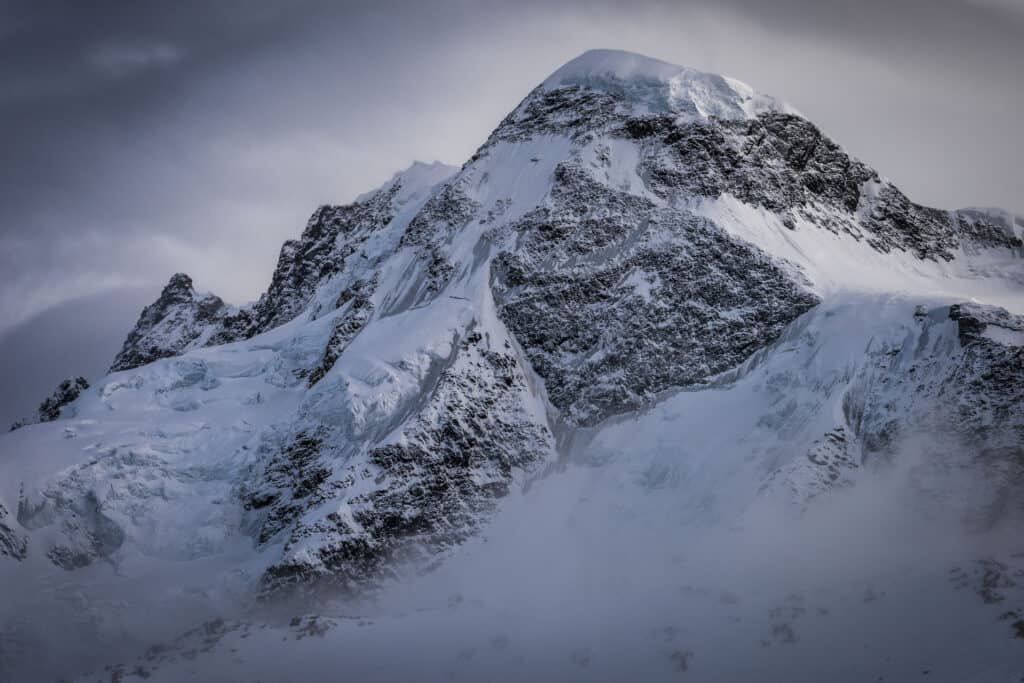
Portrait of Breithorn : Ice wall at summit the Alps
The Breithorn rises to 4160 m above sea level on the border between the Valais Alps and the Aosta Valley. The result of the unleashing of an expanding Thetys Sea, the mountain belongs to the ZermattSaas Fee oceanic belt. In the first light of the Alpine realm, nature creates an absolute masterpiece. Along a seemingly endless ridge, she sculpts the peaks in serpentinite. Five immense summits in hard, greenish-scaled rock, like a reptile undulating in search of prey. Breithorn awakens at the crossroads of worlds, forging a gleaming armour of ice. On the borders of Switzerland and Italy, it watches over Zermatt and the whole valley.
From west to east, the Breithorn summits display their grandeur for over 2 km. Our journey begins above Klein Matterhorngletscher and ends at Schwarztor. At an altitude of 4160 m, our gaze falls on the West Breithorn , the highest of them all. We are then guided to the central Breithorn , at 4154 m. We cross the lowest point of the ridge at La Selle, 4018 m above sea level. The traverse then takes us to the summit the East Breithorn and its brother, the Breithornzwillinge, which rise to 4138 m and 4106 m respectively. Our flight ends at the Roccia Nera summit, at 4069 m.
The wall, dressed in white, overlooks an ocean of eternal snow. To the south, the Grande Ghiacciaio di Verra and the Breithornplateau. To the north, Triftjigletscher, Breithorngletscher and Schwärzegletscher, which all flow towards Gornergletscher. Glaciers that are gradually revealing their crevasses, silent victims of global warming.
Breithorn ascent: the story of a mountain conquered by men
Since the Jurassic era, Breithorn has dominated a wild land where untouched nature meets the firmament. But there's a disturbing echo in the Alps. Man felt ready to conquer it. On August 13, 1813, a team of climbers set off up its south-western slope. Joseph-Marie Couttet, Jean Gras père, Jean-Baptiste and Jean-Jacques Erin and Henry Maynard made the first ascent of Breithorn via its normal route. On September 15, 1869, Robert Fowler, Peter Knubel and Gregor Ruppen climbed the mountain via the Triftjigrat. This was the first ascent of Breithorn via its northern ridge. The two main access routes to the mountain were now open.
On August 16, 1884, Ulrich Almer, Aloys Pollinger and John Stafford Anderson triumphed over its ridges. They made the first east-west traverse of the Breithorn summit ridge, skirting the Roccia Nera and the central Breithorn from the south. On July 19, 1900, Eduard Hahn and his companions continued the adventure, this time making the first complete traverse of the mountain.

Almer's first ascent paved the way for exploration of Breithorns north face. In 1897, Ulrich Almer, Christian Kaufmann, Christian Jossi, Herbert Johnston Motherhill and Charles Stephen Ascherson made the first ascent of the north face. Together, they succeeded in crossing the wall of ice formed by the Breithorngletscher to the west of the East Breithorn . The wall is steep, but the climb is pleasant.
A few years later, this victory was overshadowed by a major coup. In 1906, Joseph Knubel, Moritz Ruppen, Geoffrey Winthrop Young, Charles Donald Robertson and R. J. Major made the first ascent of the North Ridge of East Breithorn . Throughout their expedition, the mountaineers had their doubts. The anxiety is permanent, and right up to the last few meters separating them from the coveted summit , their hearts vibrate to the rhythm of the greatest challenges. When they finally reach the Breithorn ridge, they cry and shout with joy. They can't believe it. Their achievement reverberates across the mountains. Together, they have conquered one of the most beautiful ridges in the Alps. They named it the Younggrat, in homage to the heroes of this crossing.
The North Face of Breithorn , now in the spotlight, aroused the fervor of mountaineers. On September 3, 1919, Dietrich Von Bethmann-Hollweg, accompanied by his guides Oskar and Otmar Supersaxo, was the first to tackle the north-west face of Breithorn. More than 1000 m of ascent for an exceptional race. And when, in 1926, Willo Welzenbach and his companions climbed to the summit Breithorn via this face, they were convinced they were the first to follow this route. But disillusionment could not dull the audacity of such an adventure.
The north-west face of the Breithorn is still the object of many records. In June 1964, Paul Etter, René Arnold and Herbert Maeder achieved the first directissime on this face. And on August 2, 1973, Helmut Kiene climbed it solo. The Breithorn no longer counts the number of men who have climbed it. The wall is open to mountaineers and skiers who criss-cross its snow-covered flanks and ridges.
Breithorn traverse: A celestial ascent in the Swiss Alps
Today, the Breithorn is considered one of the most accessible 4000-meter peaks in the Alps. Since 1979, Europe's highest cable car has linked the Zermatt resort to the Klein Matterhorn. This makes it easy to approach the Breithorn . A ski lift also takes guests from the Klein Matterhorn to the Dos de Rollin. It takes just a few hours to reach the highest summit the Breithorn.
Even if it seems tamed by man, the high mountains remain wild and unpredictable. To the north, the steep flanks of the Breithorn give it the appearance of an impregnable colossus. To the south, its slopes may be gentler, but our illusions sometimes conceal the worst dangers. How many climbers have succumbed to nature's traps? Avalanches, crevasses, falling seracs or formidable ledges. The mountains will never surrender their power and beauty to man.
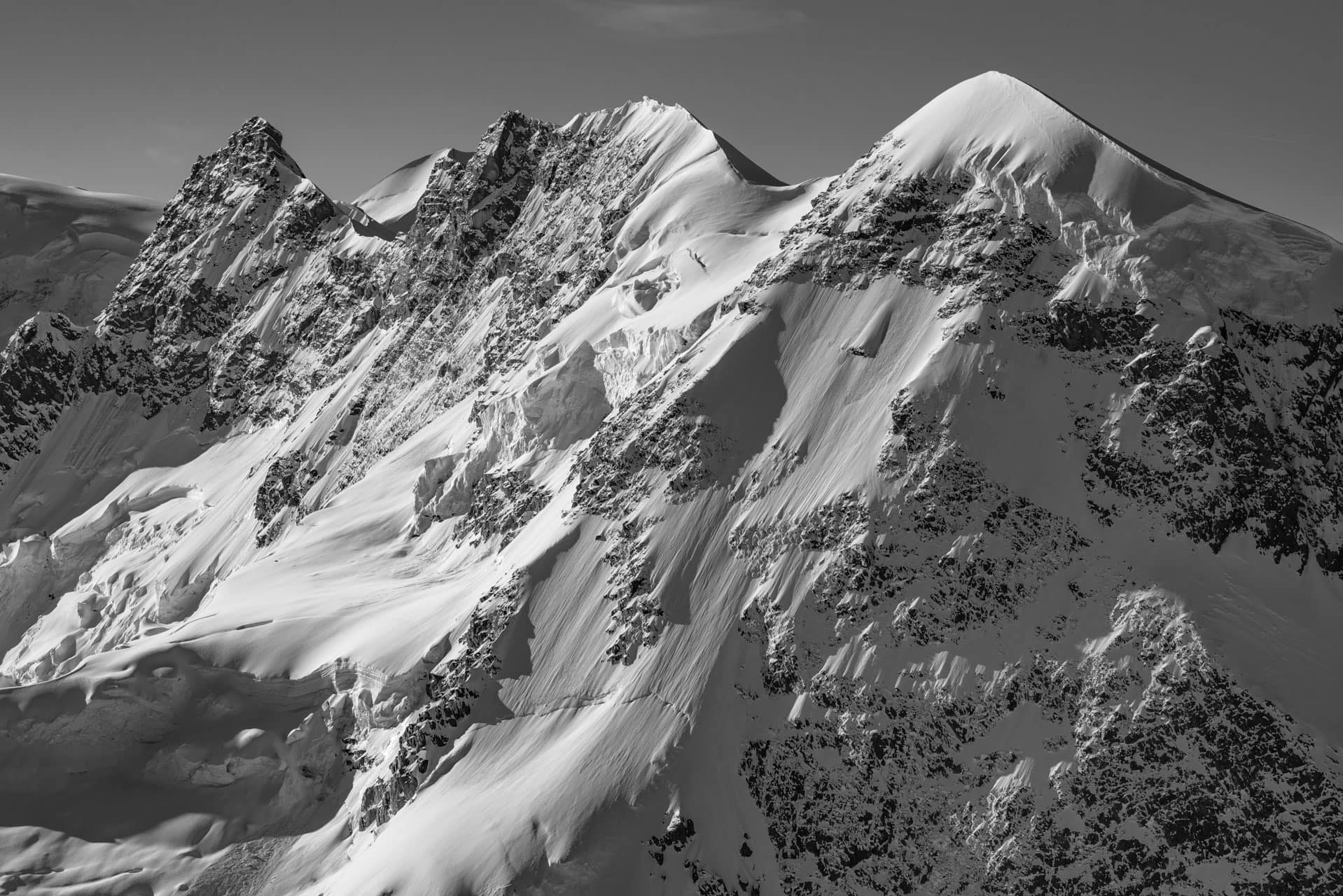
The Breithorn shines at the summit the Alps like an invitation to reach for the sky. At the gateway to a kingdom where nature is free and all-powerful. A wall of ice with millennial reflections that watches over Zermatt and Valtournenche. Like a stone giant warming our hearts.
